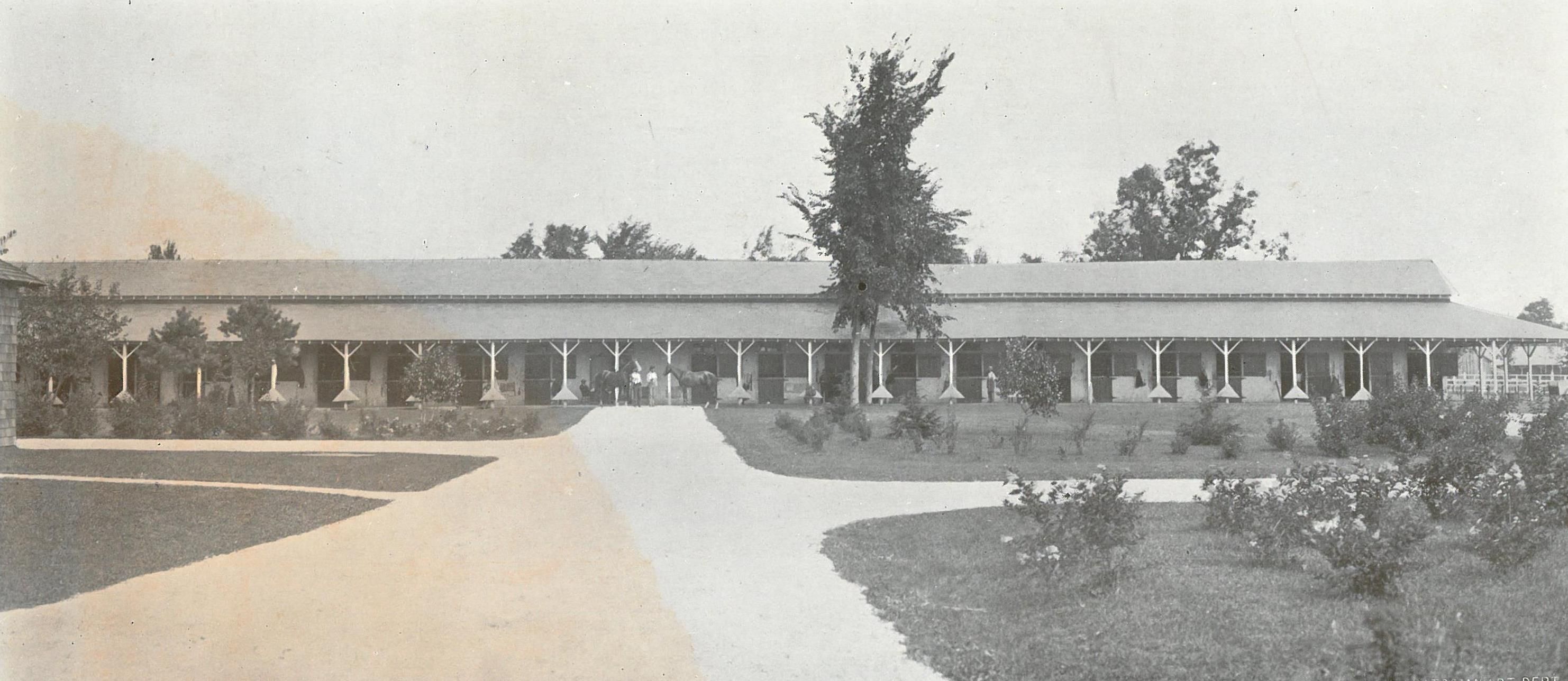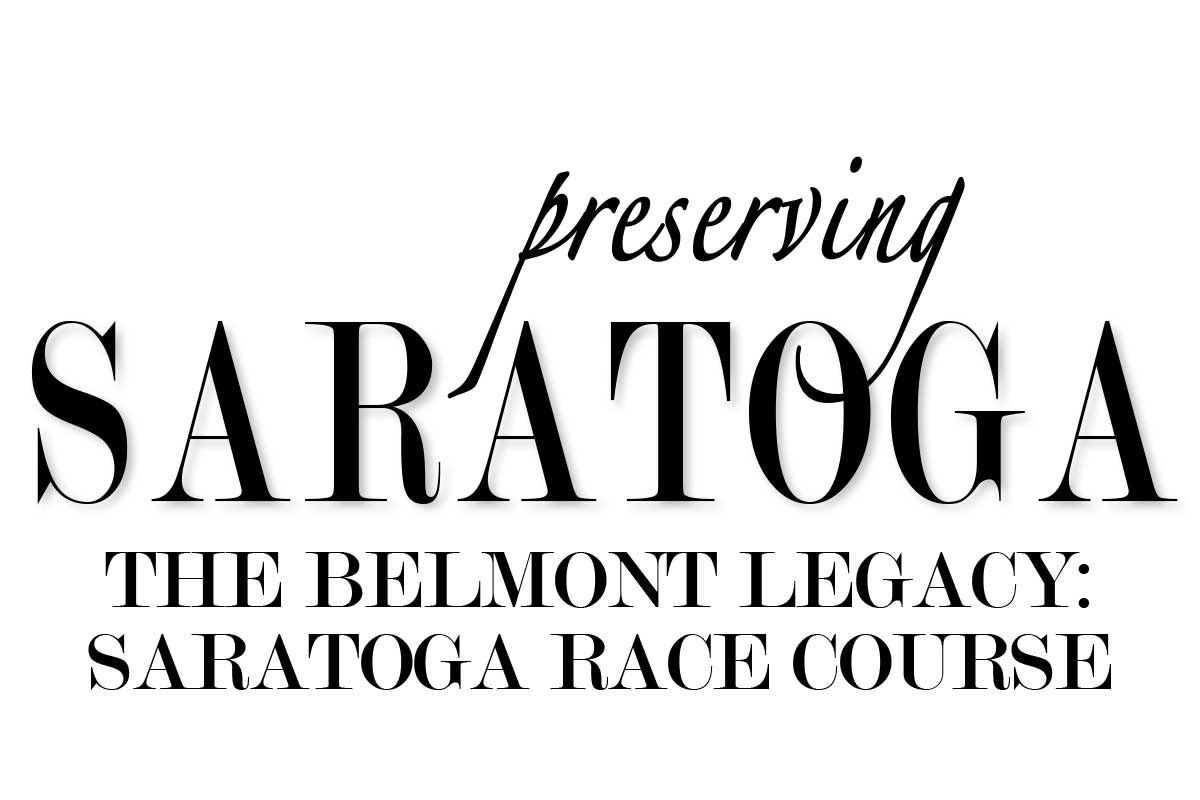
WRITTEN by Samantha Bosshart, Saratoga springs Preservation Foundation
photos provided (unless Noted)
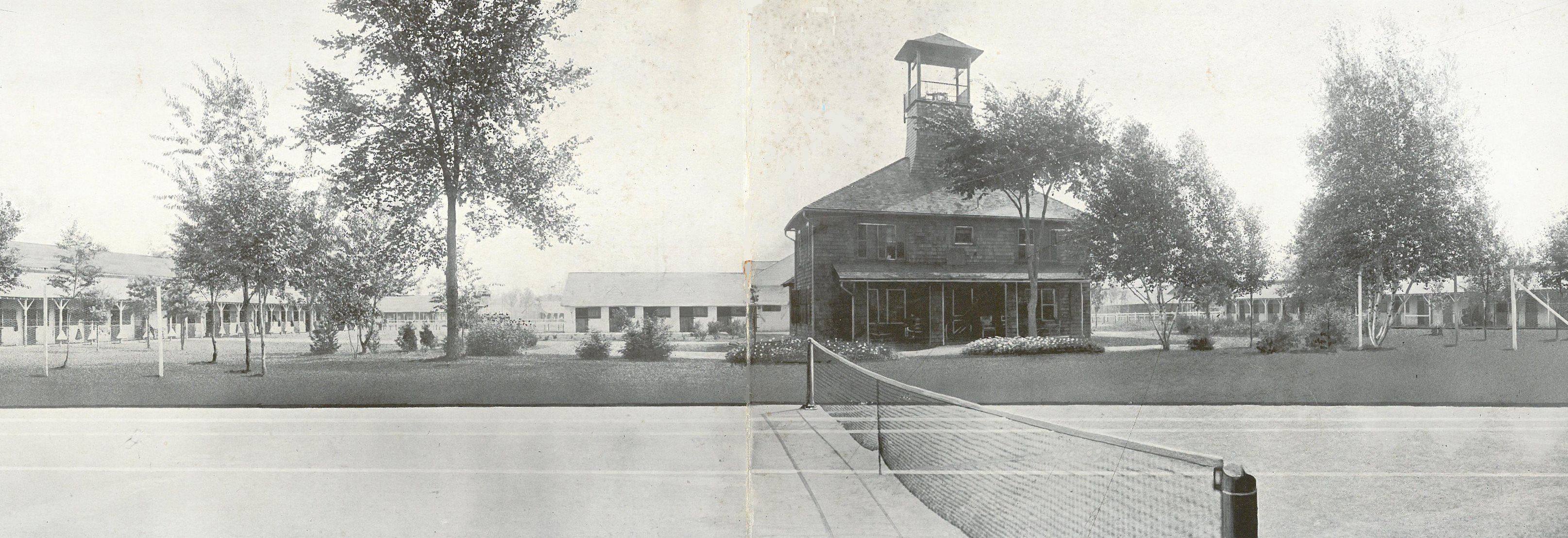
History was made on June 8, 2024, with the first running of the Belmont Stakes at Saratoga Race Course, the oldest sports venue in the United States. While everyone is familiar with the iconic spires of the historic grandstand, many may not know about the former private stable of August Belmont Jr.
Historically, several prominent families owned private stables adjacent to the Saratoga Race Course – Dupont, Madden, Sanford, and Belmont. All these properties were acquired over time. Today, Saratoga Race Course encompasses over 350 acres with more than 200 structures. One of the more visible private stables is the former stable of August Belmont Jr., named “Surcingle,” which is a leather strap used to accustom young horses to girth pressure.
August Belmont, Sr. was a German immigrant who established the banking house, August Belmont & Co., in 1837. He became a wealthy financer and prominent figure in the development of Thoroughbred horse racing in the United States. In 1866, Leonard W. Jerome and Belmont Sr. funded the construction of Jerome Park Racetrack. The following year, Belmont financed the first Belmont Stakes, the oldest and longest of the three classic horse races that constitute the Triple Crown. In 1890, Belmont, Sr. joined Senator George Hearst, A. J. Cassett, W. J. Arkell, and others to form a new Saratoga Association that was most likely short lived due to Belmont, Sr. passing away on November 24, 1890, and Hearst passing away on February 18, 1891.
August Belmont Jr. followed in his father’s footsteps. Immediately upon the passing of his father, Belmont took control of August Belmont & Co. and purchased seven of his father’s mares at a dispersal sale. In 1894, he was one of the founding members and first president of The Jockey Club, a role he served until his death. Belmont was also one of the nine founding members of the National Steeplechase Association, established in 1895, and served as the chairman of the first New York Racing Commission.
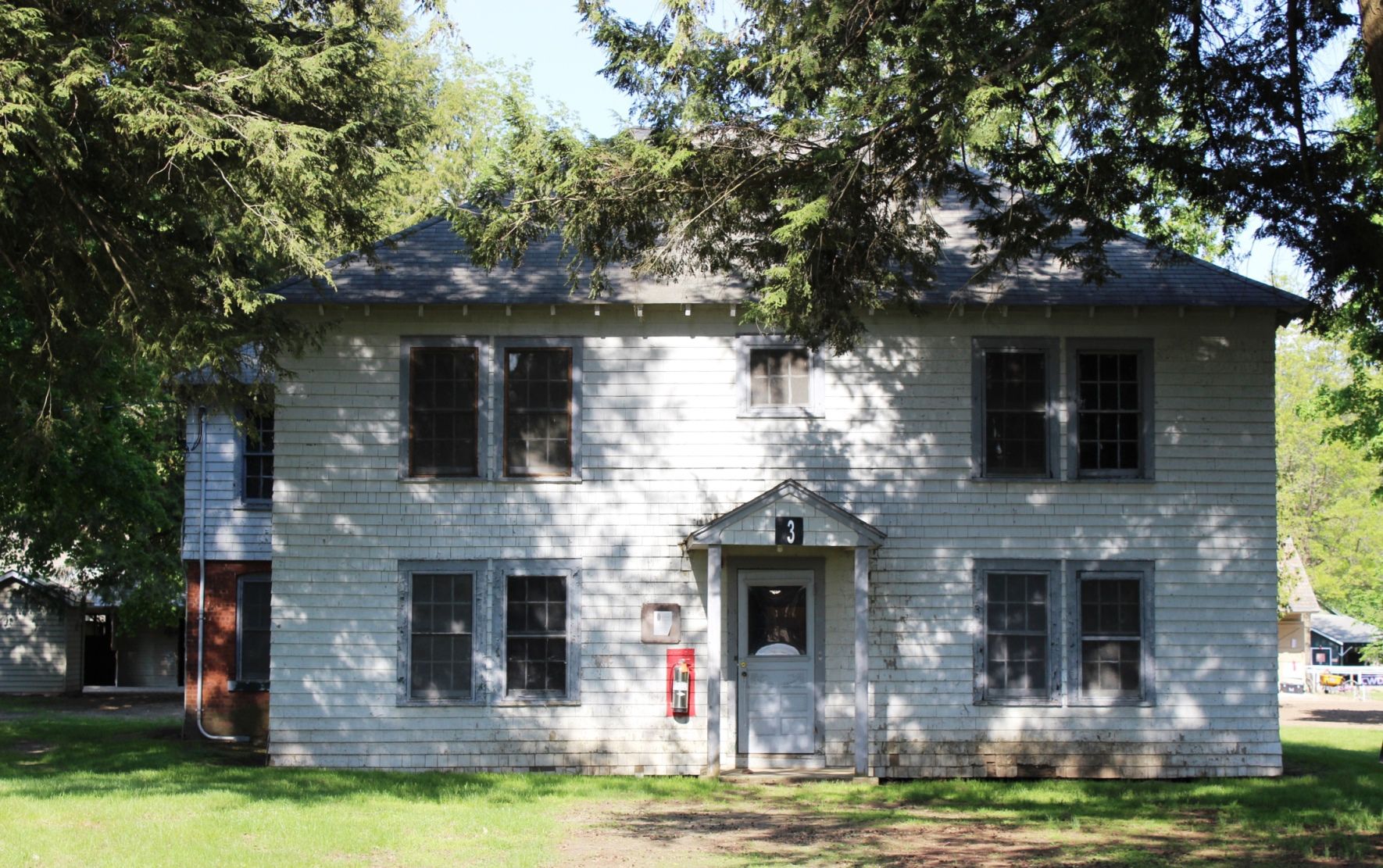
The Belmont Cottage today
In 1902, Belmont founded the Interborough Rapid Transit Company to finance and operate the first line of what is now the New York City Subway. That same year, Belmont and William C. Whitney, along with other investors, purchased the land to build Belmont Park, named in honor of Belmont’s father. In 1905, Belmont Park opened and hosted the Belmont Stakes, which had previously run at Jerome Park and Morris Park.
In 1900, a reborn Saratoga Association that included William C. Whitney, Richard T. Wilson, Belmont, and others acquired Saratoga Race Course from the infamous Gottfried Walbaum. Under the leadership of Whitney, the Saratoga Association made significant improvements, including rotating the track 25 degrees and moving and expanding the Grandstand. In 1902, as a result of the rotation of the track, the original Belmont Sr. stables were relocated, and Belmont built new private stables that today are visible from Nelson Avenue.
A June 1, 1902, New York Times article described the many improvements made at Saratoga Race Course and noted that Belmont Jr. “proposed to make Saratoga his northern headquarters and with this end in view has expended $75,000 on his property… He has constructed a private practice track, which encircles his residence and stables, moved from the farm north, where they were situated a year ago.” Today, $75,000 is worth an estimated $2.7 million.
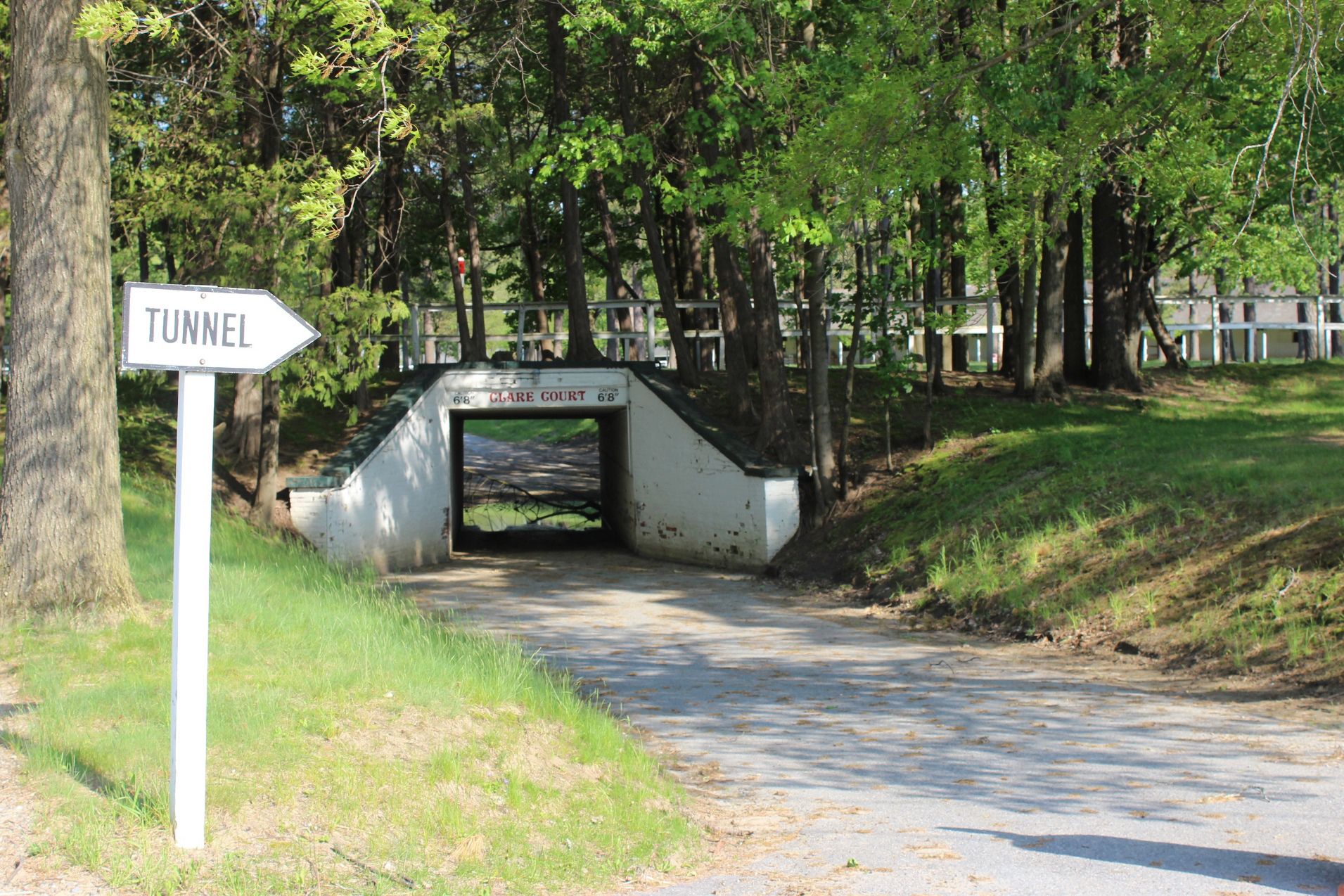
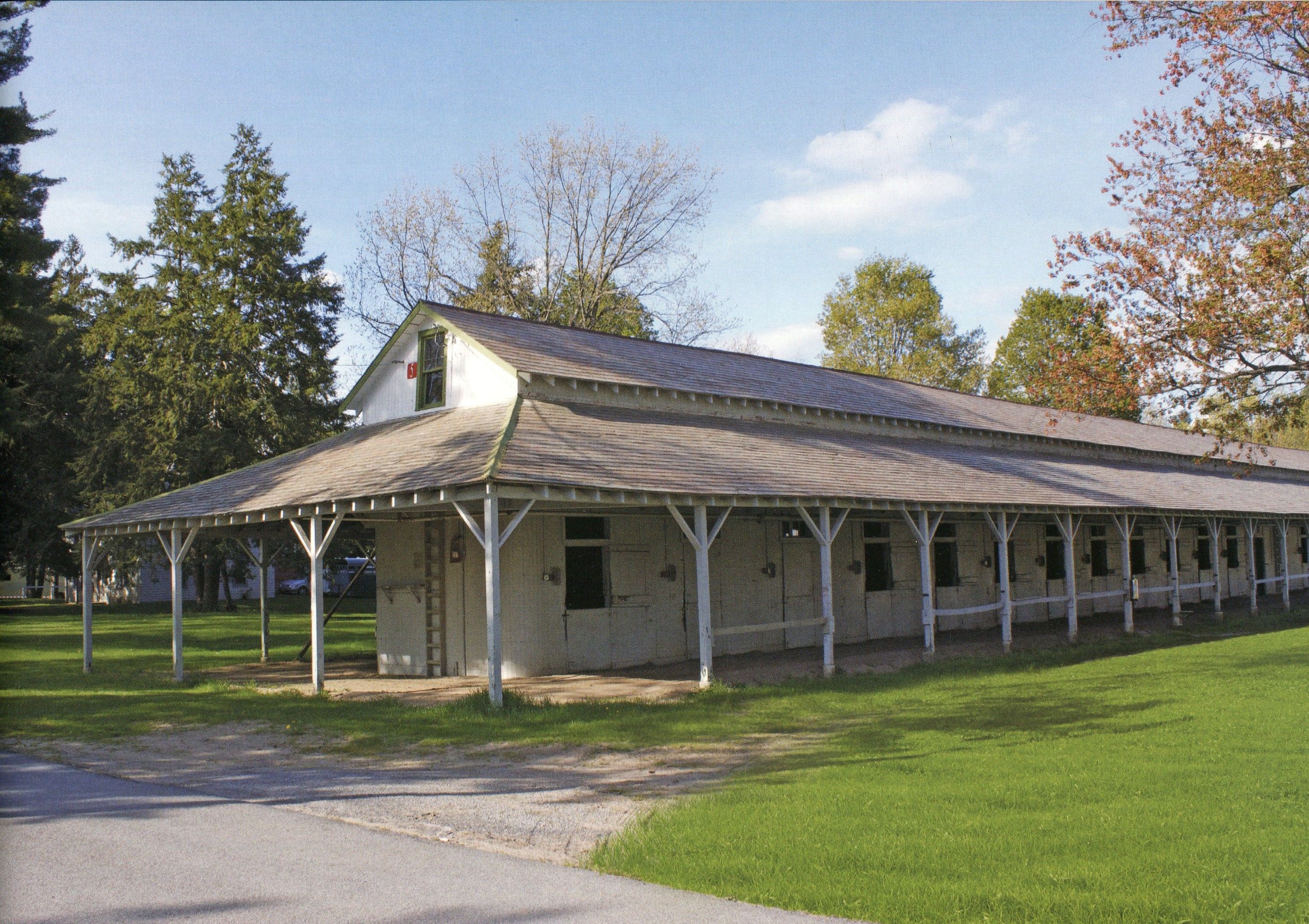
On the new 13-acre site south of the newly rotated main track, Belmont built a comprehensive stabling facility that included a residence, stables, and structures to serve as a kitchen, blacksmith’s workshop, and dwellings for employees. The buildings were encircled by a private exercise half-mile track. His two-story, shingle-clad residence, which was referred to as a “cottage,” had a lofty outlook tower that gave Belmont a commanding view of the entire training track and was surrounded by lush gardens and a lawn tennis court.
A tunnel was constructed at the cost of $10,000 so that Belmont could reach his residence without having to disrupt the horses on the training track. The same 1902 New York Times article described the tunnel as being “10 feet square, with square arches and macadamized flooring. It will be lighted by electricity.”
According to the 50th Anniversary The Saratogian 1856-1905 Souvenir, the stables were “constructed with as much care as the ordinary dwelling” being built of the “best materials, by the most skillful workmanship, and is a model home for the horse. Mr. Belmont is a great lover of the horse, and he has certainly erected for him here some of the most luxurious homes ever prepared for this noblest of the friends of man.” He built stables for both Thoroughbred racehorses and polo ponies. The Souvenir continued, “One of the sights to see of this handsome park is to see the Belmont polo ponies, some fifteen or twenty of them filing out of their luxurious quarters, in charge of some half dozen attendants, and starting for the grounds at the Saratoga Polo Club on the other side of the village.”
Two of the stables are single-row with 24 stalls with a distinctive gable slate roof with a wrap-around shed roof to allow for horses to be walked under cover. The vertical tongue-and-groove clad stables have rounded corners and chamfered posts intended for horse safety while using the sheltered walking ring. The stables have a full attic loft for storing hay that can be accessed by wall ladders. In addition, a barn was constructed solely for the stabling of driving horses and carriages. The carriage stable with its large double doors is flanked by six horse stalls with a cantilevered roof on each side.
Belmont died on December 10, 1924. The Times Magazine, dated December 22, 1924, wrote, “He is credited with having saved Thoroughbred racing when it was at its lowest ebb in the East, after the repeal of the racing law in New York State.” In total he had bred 129 stakes winners, including the great racehorse Man o’ War and six other champions.
At some point after his death, the private Belmont property became part of Saratoga Race Course. Surcingle was later renamed Clare Court in honor of Tom and Anne Clare who served as successive superintendents of the track from 1924 to 1960. The stables and small cottages are still used today. Belmont Jr.’s cottage currently serves as a women’s dormitory. Unfortunately, over time the front porch and the large tower that provided Belmont with views of his property were removed. The New York Racing Association plans to rehabilitate the cottage. The rehabilitation plans include the restoration of the front porch, but not the tower.
The next time you drive along Nelson Avenue, be sure to look east to catch a glimpse of August Belmont Jr.’s former property, Surcingle. The Saratoga Springs Preservation Foundation will host a tour of Saratoga Race Course that will include this area and many others on Tuesday, August 20. To learn more and register, please visit www.saratogapreservation.org or call (518) 587-5030.
Founded in 1977, the Saratoga Springs Preservation Foundation is a private, not-for-profit organization that promotes the preservation and enhancement of the architectural, cultural and landscaped heritage of Saratoga Springs.
